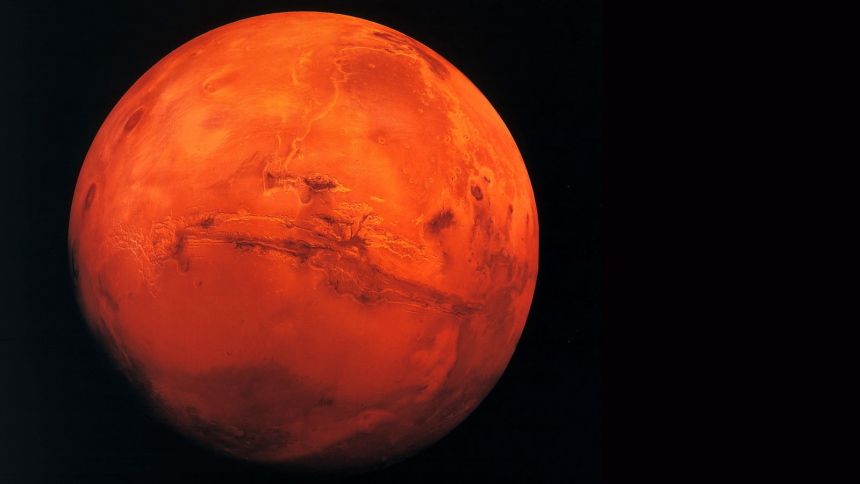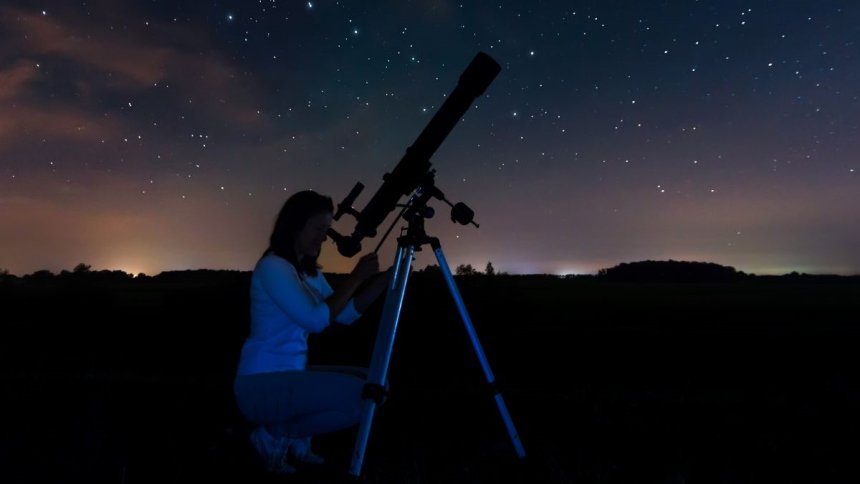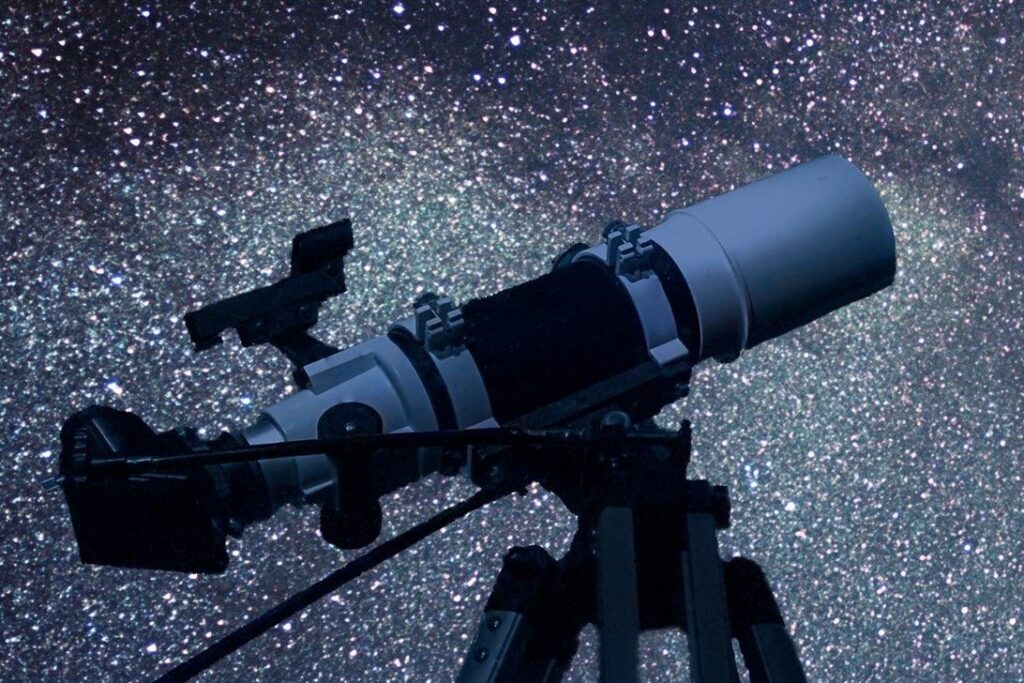Mars is a planet that has always fascinated humans. For many centuries, men have studied it and speculated about it and even wondered whether there could be life on it. Humans are entranced, not only by its red color but also by its mysteries. After all, it’s one of our closest planets and can actually be seen with the naked eye. You also have the advantage of viewing Mars through a telescope to view more details, and this article will discuss how to view the planet and which apertures are best for viewing it. In addition, we’ll guide you in picking the best telescope for your purpose, and with our elementary facts about Mars, your planet-gazing hobby will be off to a good start. So, if you’re interested in finding out more about Mars, read further.

Mars is a red planet Trusted Source Mars: Everything you need to know about the Red Planet | Space Mars, the fourth planet from the sun, is famed for its rusty red appearance. The Red Planet is a cold, desert world with a very thin atmosphere. But the dusty, lifeless (as far as we know it) planet is far from dull. www.space.com close to earth that you can see with the naked eye. It’s just over half the size of the earth and weighs much less than the earth. On Mars, there’s 62.5% less gravity than on earth, and the planet has an atmosphere over 100 times less dense Trusted Source The Planet Mars Mars is the last planet of the inner four terrestrial planets in the solar system at an average distance of 141 million miles from our Sun. It revolves around the Sun every 687 days and rotates every 24.6 hours (nearly the same as Earth). Mars has two tiny satellites, named Deimos and Phobos (shown below). They are most likely small asteroids drawn into Mars’ gravitational pull. Deimos and Phobos have diameters of just 7 miles and 14 miles, respectively. www.weather.gov than our own planet’s. This atmosphere is composed of 96% carbon dioxide, and it’s significantly colder than the earth, moving between – 284°F and 86 degrees. In fact, this cold causes the carbon dioxide to condense into snow or frost. The planet looks red because of the iron oxide in the soil and is 142 million miles from the sun. It also has two polar caps and two moons. How do we know the mineral composition of Mars? Firstly, we’ve discovered meteorites from Mars that have landed on earth. Secondly, we use imaging spectroscopy Trusted Source FAQ - Mars | Planetary Science Institute Earth and Mars have fairly similar compositions, with roughly equal amounts of rock and iron in their interiors. Even taking compression into account, Earth’s density is still somewhat larger than Mars’, indicating either somewhat more iron or fewer less-dense materials (water?) than Mars. Mars’ surface is largely covered with basalt, a volcanic rock covering much of Earth’s surface as well. Earth has large amounts of granite in its crust, which Mars appears to lack. Carbonate (as in limestone) is common on Earth, and has been recently discovered on Mars as well, though how much of it is below the surface is not known. The finding of carbonate implies the past existence of water on Mars. Mars presently lacks oceans, but appears to have a lot of water buried below the surface. Again, how much is not well known. www.psi.edu to determine which minerals are on Mars. Thanks to modern technology, we can do this remotely.
There’s no skill required to see Mars. You can even see it with the naked eye if you know where to look. It can be distinguished by its reddish glow, which a telescope will magnify. You can look at Mars when it’s closest to us, such as in December 2022. It’s far harder to see when its orbit takes it to the furthest point from earth.
You can look for Mars when it is in opposition, which happens every two years. That means that it’s aligned with the earth relative to the sun, with all three of them in a straight line. Because Mars has an elliptical orbit, it has times when it’s in opposition but not as close to the earth as at other parts of its orbit. So, when it’s in opposition, it’s not necessarily the closest to earth that it can be. In fact, that distance can vary between 56 and 101 million kilometers. Furthermore, you can’t see Mars when it’s on the opposite side of the sun. We call that solar conjunction.
You can see Mars from sunset to sunrise, and it reaches the highest point in the sky in the middle of the night, from where it’s best visible. If you try and look at it at a low point in the sky, you only find that a lot of turbulence and atmospheric pollution get in your way.

Thankfully, even the least expensive telescope will be sufficient. A good 4-inch lens will give you a really good view, but you’ll see limited detail due to the atmosphere of the planet. A good telescope of 60 – 100 mm gives you an adequate view of the planet. However, to get a detailed view of the surface, you need one with:
However, if you’re on a budget, refractors, and binoculars are well suited to star-gazing. They’re efficient enough for short sessions without needing time to set up a telescope. Looking through a telescope takes practice. You have to either keep both eyes open or cover one eye in order to see. Squeezing one eye closed disrupts the process.
To begin with, you could visit your nearest observatory to find out more about the planets and stars and how to use a telescope. What’s more, there are lots of star-gazing apps available to help you identify what you’re looking at. Simply download the app on your phone. Then you only need to point the device at a section of sky and ask it to identify what’s there.
Precautions and instructions when using a telescope:
Firstly, you need to stabilize your tripod. Find a level surface, and spread the legs out until it looks steady. Then you’re ready to start adjusting your telescope.

The next step is to align your telescope. Using your non-computerized alt-az mount, allow your telescope to swing in any direction. But even with some of the best telescopes under $500, you can easily align it for a successful star gazing evening.
Now you need to adjust the focus. Everyone’s eyes are different, so you’ll need to adjust them so that it suits your eyes.

With certain entry-level telescopes and ones that cost $300 or less, You will only be able to see some of the planets with this aperture size, but none of the details on those planets. All you will be able to make out is that Mars is a reddish disc.
With this type, the device will collect more light, and you’ll have a better view of Mars. To improve your experience, add an eyepiece that gives you 120 – 200 x magnification. You can see the polar caps and main dark surface areas. You can also see many of the other planets more clearly with this aperture and magnification.
This now gives you a clearer view of Mars. In fact, simply the addition of an eyepiece of 300x magnification will show finer details. An orange filter over the lens will make the darker features stand out.
With this aperture, you can see clouds and more surface detail. You can see most planets, and you can see Mars’ red color, clouds, and the highest level of surface detail.
If you’re tall, you’ll want an equatorial mount, like the Orion SpaceProbe, as you don’t have to bend down to look in the aperture. For the beginner, you could consider an entry-level telescope that has very good images for the price, such as the Celestron Astromaster.
Magnification is the way a telescope makes its image larger. It all depends on both its focal length and the eyepiece’s focal length. The higher the magnification, the better your view of Mars. So, you can use a magnification of 20 – 50 x the aperture when looking at Mars.
There are a number of frequently asked questions about Mars that are worth mentioning below.
Mars is the second smallest planet in our solar system before Mercury. It has a radius of 3389 km, about half the size of the earth.
The matter of whether there could be life on Mars is still under investigation. However, early indications suggest that there is water under the surface, which means that there could be life there.
You can certainly see Mars through binoculars. It’s not a very good view, but it’s at least visible.
The planet Mars is a small planet that continues to intrigue humans. We’re busy discovering whether there truly is life on it, and there are plans afoot to start a small colony on it by 2030. It’s not habitable for humans, and we have to discover how to:
Those who settle there will most likely have to live in a bubble. So, one day, if you’re watching through your telescope, you may be able to see your relatives’ bubble on the surface of Mars. Until then, you’ll have to be content with looking at Mars through a telescope and finding out about any developments of NASA’s Rover.





